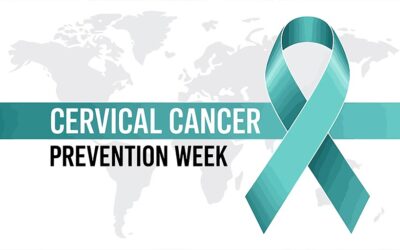How Urbanization is Driving the Rise in Diabetes Cases in India

Diabetes has emerged as one of the most pressing health concerns in India. As the country continues to evolve and embrace modern lifestyles, everyday habits are shifting in ways that directly impact long-term health. From reduced physical activity and irregular eating patterns to heightened stress and limited sleep, urban living has quietly reshaped how the body manages blood sugar. These changes are contributing to a rise in Type-2 diabetes, often affecting individuals at a younger age than ever before. In this article, we will explore what diabetes is, how the fast-paced urban lifestyle is influencing its growth in India, and what can be done to recognise, prevent, and manage the condition more effectively.
Table of Contents
ToggleWhy Urban India Is Seeing More Cases of Diabetes
India is undergoing a noticeable shift in how and where diabetes is developing. While the condition was once more common in older adults and largely associated with genetic risk, today it is being increasingly driven by environmental and lifestyle factors—especially in urban areas.
Cities are seeing a significant rise in diabetes cases compared to rural regions. This difference isn’t just coincidental, it reflects the deep impact of how people live, eat, work, and move in urban spaces. With longer working hours, reduced physical activity, high stress, and easier access to processed food, the average city-dweller faces a much higher risk of developing Type 2 diabetes.
The trend is also shifting demographically. More young adults, and even teenagers, are now being diagnosed with diabetes in urban India. Unlike previous generations, where diabetes was more common after the age of 50, current patterns show earlier onset, faster progression, and more frequent lifestyle-related complications.
Although the numbers vary across studies and regions, the overall direction is clear: Indian cities are becoming hotspots for diabetes. This surge is a reflection of how urban living is silently shaping health patterns, and why early awareness, regular screening, and lifestyle changes are more important than ever for those living in urban settings.
Understanding Diabetes: Types and Causes
Diabetes is a long-term condition that affects how the body regulates blood sugar (glucose). Glucose is the main source of energy for the body, and insulin—a hormone produced by the pancreas—helps move it from the bloodstream into the cells. When this process is disrupted, glucose builds up in the blood, leading to diabetes. There are two main types of diabetes:
- Type 1 diabetes is an autoimmune condition where the body’s immune system mistakenly attacks insulin-producing cells. It usually starts in childhood or adolescence and requires daily insulin for survival. Type 1 is not linked to lifestyle or diet.
- Type 2 diabetes is far more common and is usually diagnosed in adults, though it is now seen in younger people as well. In this type, the body either doesn’t produce enough insulin or becomes resistant to its effects. It develops gradually and is strongly linked to poor diet, lack of exercise, excess weight, and chronic stress.
- Gestational diabetes is a form of diabetes that develops during pregnancy, typically around the 24th to 28th week. It occurs when the body cannot produce enough insulin to meet the increased demands during pregnancy, leading to elevated blood sugar levels. While it usually resolves after childbirth, it increases the risk of type 2 diabetes.
- Other rare forms of diabetes:
- MODY (Maturity-Onset Diabetes of the Young): A rare, genetic form of diabetes that typically occurs in individuals under 25 and is caused by mutations in specific genes affecting insulin production.
- LADA (Latent Autoimmune Diabetes in Adults): A slow-progressing form of autoimmune diabetes that shares characteristics of both type 1 and type 2 diabetes, often diagnosed in adults over 30.
- Cystic Fibrosis-Related Diabetes (CFRD): A form of diabetes common in people with cystic fibrosis, resulting from damage to the pancreas affecting insulin secretion.
- Steroid-Induced Diabetes: A form of diabetes triggered by prolonged use of corticosteroid medications, leading to insulin resistance or insufficient insulin production.
India is witnessing a surge in Type 2 diabetes, largely due to changing lifestyles. Urban diets high in sugar and fat, combined with physical inactivity, are creating a population more vulnerable to insulin resistance and high blood sugar.
Read more- High-Fibre Diet: Health Benefits and Top Fibre-Rich Foods
How Urban Living Is Making India More Diabetic
As cities expand and lifestyles evolve, urban environments are creating conditions that quietly increase the risk of diabetes—especially Type 2. While genetics may play a role, the pace and patterns of modern city life have become powerful triggers for insulin resistance and blood sugar imbalance. Several urban lifestyle factors contribute to this trend, such as:
1. Sedentary routines
City life often involves long hours at desks, screen time, and limited physical movement. With fewer people walking or engaging in outdoor activity, calorie burn drops while fat accumulation rises—particularly around the abdomen, which is closely linked to diabetes risk.
2. Processed and fast food culture
Easy access to packaged snacks, sugary drinks, and restaurant food is changing how urban Indians eat. These diets are typically high in refined carbohydrates and unhealthy fats, both of which contribute to weight gain and poor glucose control.
3. Chronic stress and poor sleep
Work pressures, traffic, financial demands, and digital distractions lead to prolonged stress and irregular sleep patterns. Both stress hormones and sleep disturbances interfere with insulin function, raising blood sugar levels over time.
4. Limited space for physical activity
Many urban neighbourhoods lack safe, accessible areas for walking, jogging, or exercise. As public spaces shrink, so does daily movement—especially for children and older adults.
5. Health disparities in cities
Urban diabetes is not just a concern for the affluent. Low-income urban groups also face high risk due to poor nutrition, irregular work hours, and lack of access to preventive care.
These challenges make it harder for people to detect the early warning signs of diabetes, leading to delayed diagnosis and complications. Addressing diabetes in Indian cities requires awareness, routine screening, and meaningful lifestyle shifts that fit within the pace of urban life.
Recognising the Symptoms of Diabetes
One of the challenges of managing diabetes, especially in busy urban settings, is that its early symptoms are often mild or mistaken for everyday fatigue, stress, or ageing. However, identifying the signs early can help prevent serious complications later.
Common symptoms of diabetes include:
- Frequent urination, especially at night
- Increased thirst and dry mouth
- Unexplained weight loss despite normal or increased appetite
- Persistent fatigue or low energy levels
- Blurred vision or difficulty focusing
- Slow healing of wounds or frequent infections
- Tingling or numbness in the hands or feet
- Dark patches of skin, especially around the neck or underarms (a possible early sign of insulin resistance)
In many urban adults, these symptoms may go unnoticed or be dismissed due to a fast-paced routine. It is common for people to get diagnosed only after routine check-ups or when complications arise.
Regular screening, especially for those with a family history of diabetes, obesity, or high blood pressure, is essential. Early detection allows for better control and lowers the risk of heart disease, kidney issues, and vision problems.
Preventing and Managing Diabetes in an Urban Lifestyle
Living in a city doesn’t have to mean living with diabetes. While urban environments do bring unique health challenges, small but consistent lifestyle changes can go a long way in preventing or managing Type 2 diabetes.
1. Make movement part of the routine
Even short bouts of physical activity, such as taking stairs, walking during phone calls, or stretching between work hours, can help improve insulin sensitivity. Aim for at least 30 minutes of activity most days of the week.
2. Eat with awareness
Replace processed snacks and sugary drinks with whole foods, fresh fruits, vegetables, pulses, and whole grains. Preparing home-cooked meals as often as possible gives better control over ingredients and portion sizes.
3. Manage stress
Chronic stress can lead to hormonal imbalances that affect blood sugar. Deep breathing, meditation, spending time in nature, or even short breaks from screens can help manage stress levels.
4. Prioritise sleep
Good quality sleep helps regulate hormones that control hunger, metabolism, and glucose balance. Aim for 7–8 hours of sleep, and try to keep a consistent sleep schedule, even on weekends.
5. Get regular health check-ups
Screening for blood sugar, blood pressure, and cholesterol is especially important in urban populations, where lifestyle diseases often go undetected. Digital tools and mobile health apps can also support daily monitoring.
6. Create a supportive environment
Healthy habits are easier to maintain when they’re shared. Family meals, walking groups, and workplace wellness programmes can encourage sustainable lifestyle changes.
With awareness and small daily efforts, city dwellers can take charge of their health and reduce their risk of developing diabetes, even within the fast pace of urban life.
Final Thoughts
The rapid pace of urbanisation in India has brought convenience, opportunity, and growth—but it has also quietly increased the risk of chronic conditions like diabetes. As modern lifestyles shift toward less movement, more processed foods, and higher stress, the body’s natural ability to regulate blood sugar begins to falter.
Understanding the signs of diabetes, making healthier daily choices, and prioritising preventive care are crucial steps—especially for those living in cities. With timely action, diabetes can be managed and even prevented in many cases. Urban living doesn’t have to come at the cost of long-term health. It starts with awareness and continues with simple, consistent lifestyle habits.
Frequently Asked Questions
Can city life alone cause diabetes if there’s no family history?
Yes. Even without a family history, factors common in urban life, such as poor diet, physical inactivity, high stress, and lack of sleep, can increase the risk of developing Type 2 diabetes.
What are the warning signs city professionals often ignore?
Fatigue, frequent urination, blurred vision, and unexpected weight changes are often overlooked or attributed to work stress. These could be early signs of diabetes.
Is walking enough to lower diabetes risk in cities?
Walking is a great start. When done regularly and combined with a balanced diet, stress control, and proper sleep, it can significantly help prevent or manage diabetes.
Should children in urban areas be screened early for diabetes?
Yes, especially if there is a family history of diabetes, obesity, or unhealthy eating habits. Early screening helps catch risk factors before they progress.
How can people with busy schedules stay on track with prevention?
Small, consistent efforts like meal planning, short walks, mindful snacking, and using health apps for reminders or monitoring can make a big difference.
By Specialities
- Bariatric Surgery
- Cancer Care
- Cardiology
- Dental
- Dermatology
- Diabetes & Endocrinology
- Endocrinology and Diabetes
- ENT (Ear Nose Throat)
- Eye Care
- Gastroenterology
- Haematology
- Health Care
- Health Tips
- Hematology
- Hepatology
- Internal Medicine
- Mental Health and Behavioural Sciences
- Metabolic
- Neonatology
- Nephrology
- Neurology
- Nutrition & Dietetics
- Obstetrics & Gynaecology
- Oncology
- Ophthalmology
- Orthopaedics
- Paediatric
- Physiotherapy & Rehabilitation
- Plastic and Reconstructive Surgery
- Psychology
- Pulmonology
- Rheumatology
- Spine
- Urology
Recent Posts
Need expert medical advice?
Share your details and our healthcare specialists will reach out to assist you.
By proceeding, you acknowledge and agree to our Privacy Policy, Terms of Use, and Disclaimer.



















